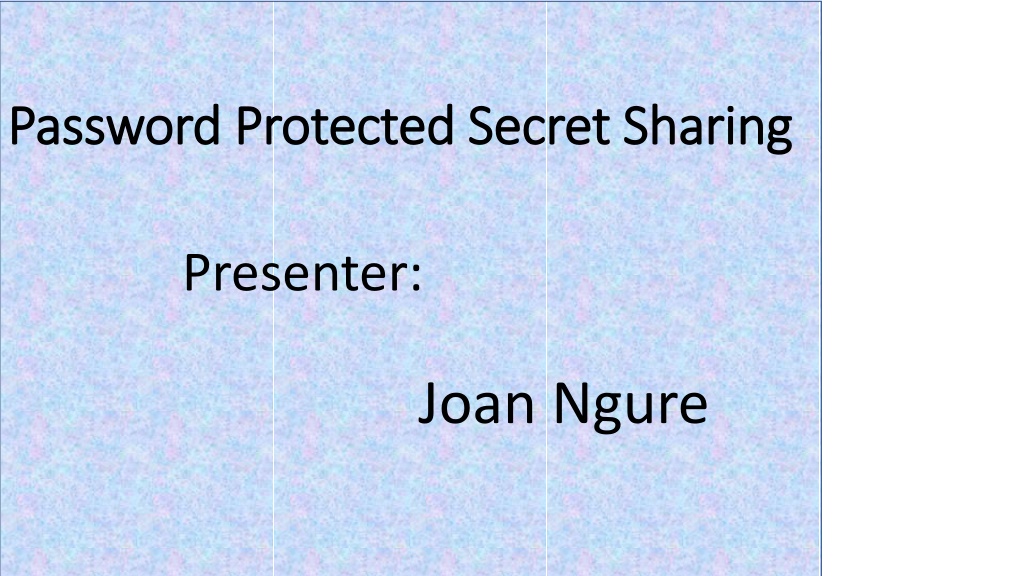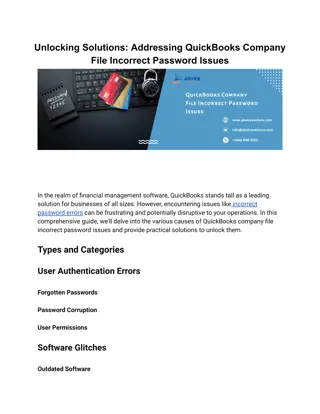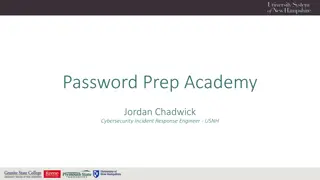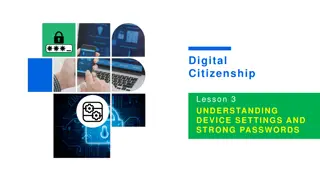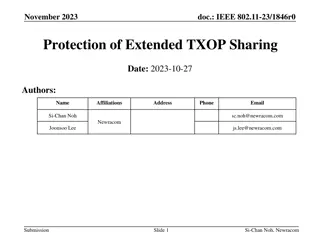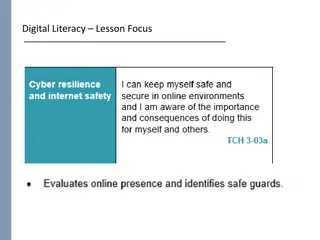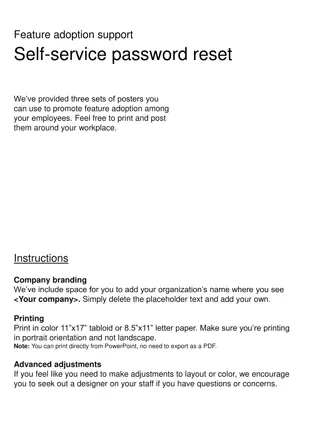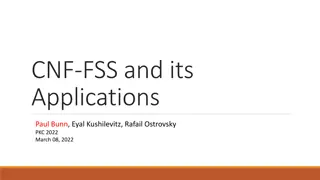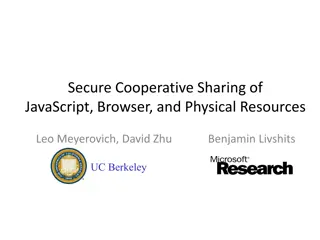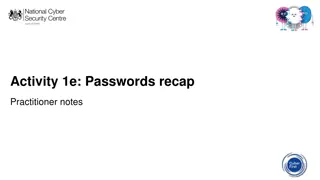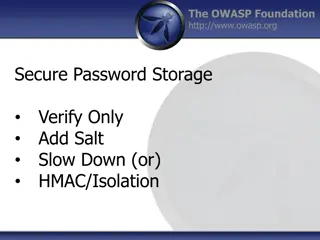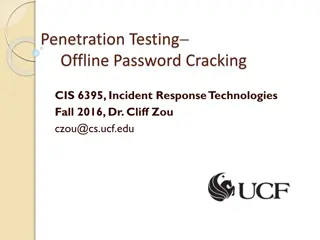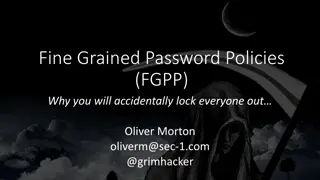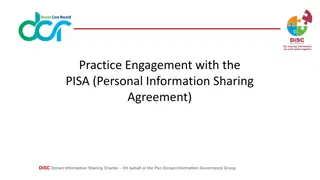Understanding Password-Protected Secret Sharing for Enhanced Data Security
Exploring the concept of password-protected secret sharing, this content delves into Shamir's Secret Sharing, ElGamal Public Key Encryption, and the importance of securing sensitive information with robust schemes. It highlights the challenges of offline attacks, properties of secret sharing, and the security features of ElGamal PKE. The narrative emphasizes the need for multiple layers of security to safeguard data in a digital age where privacy breaches are prevalent.
Download Presentation

Please find below an Image/Link to download the presentation.
The content on the website is provided AS IS for your information and personal use only. It may not be sold, licensed, or shared on other websites without obtaining consent from the author. Download presentation by click this link. If you encounter any issues during the download, it is possible that the publisher has removed the file from their server.
E N D
Presentation Transcript
Password Protected Secret Sharing Password Protected Secret Sharing Presenter: Joan Ngure
Outline 1. Definition of shamir s secret sharing 2. Elgamal Public Key Encryption 3. What is password protected secret sharing 4. Explain a password protected secret sharing scheme 5. Attacks and why it should be secure against offline attacks 6. Suggested improvements
SSS Algorithm ? ? = ? + ?1? + ?2?2+ + ???? 1 xi = Public Identity ??= Secret Share ? ? ??
SSS Properties 1. Correctness ? ??? ? (?1, ,??)??????????? ?1, ,?? = ? = 1 Pr 2. Perfect Secrecy Pr(?|?1, ,?? 1) = Pr(?)
ElGamal Public Key Encryption Bob Alice ?,?,? ? ? ?? ? = ?? ??? ? ? = ?? ? ??? ? ? = ?? ??? ? a , b ? ?? ??? ? ? = ?- secret key ?- public key ?- generator of ?? ?- Message.
Security Properties of ElGamal PKE The message is masked by multiplying it with ???. Given (?,??) it is difficult to find ?. This is because finding the discrete log in a cyclic group is difficult. Given ( ??,??) it is not sufficient to compute ???. Thus, the message remains secure.
Password Protected Secret Sharing Alice has some secret data which she wishes to protect. Her device would get stolen or fall prey of some malware, which could expose her data. She would also like to access her data from more than one device using a password.
Password Protected Secret Sharing Cont ?1 To access the shares, a password is required. N passwords are hard to remember.. ?2 Secret Using only a single password on n servers isn t secure. ??
Security Properties 1. Alice can recover her secret data upon entering her password in the reconstruction protocol, as long a t uncorrupted servers are accessible. 2. An adversary corrupting t servers without the knowledge of the password does not learn anything useful about the secret.
? ? ?? ??? ? = ? , if ? ? = 0
Prevents offline dictionary attack In the initial protocol: ? ? ?? ? ??? From the protocol in step S1, ? ???is exposed. This exposes the system to an offline dictionary attack as follows: Take an adversary who runs the protocol twice while keeping ? constant:
= ?2 Look for a ? such that ?1 ? ?? ? ?1??1 ? ?1??1? ? = ?1 ? ?? ? ?2??2 ? ?2??2? ? = ?2 Using ? instead of ?? protects the protocol from such an attack.
Attacks 1. Eavesdropping on zj ?. Solution: The user can generate a public-private key pair. The servers can then use the public key to encrypt their values of zj. 2. Randomization of (??~,??~), ensuring that ? = ? , without the knowledge of ?. Solution: Use zero knowledge proofs to prove the knowledge of ??~ and ?~ such that ??~,??~ (???~,???~ ?~)
Suggested Improvements 1. Password update. 2. Secret key share updates.
Password Update At time t = 1: ?1??1 ? ?1 ?1 ?1 At time t = 2: ?2??2 ? ?2 ?2 ?2
Updating Secret Key shares Phase 2 (? ? + ? (?)) Phase 1 Updating shares without changing the secret. private key. Updating shares without changing the
Conclusion Using Password Protected Secret Sharing provides an additional layer of security as opposed to using secret sharing alone.
